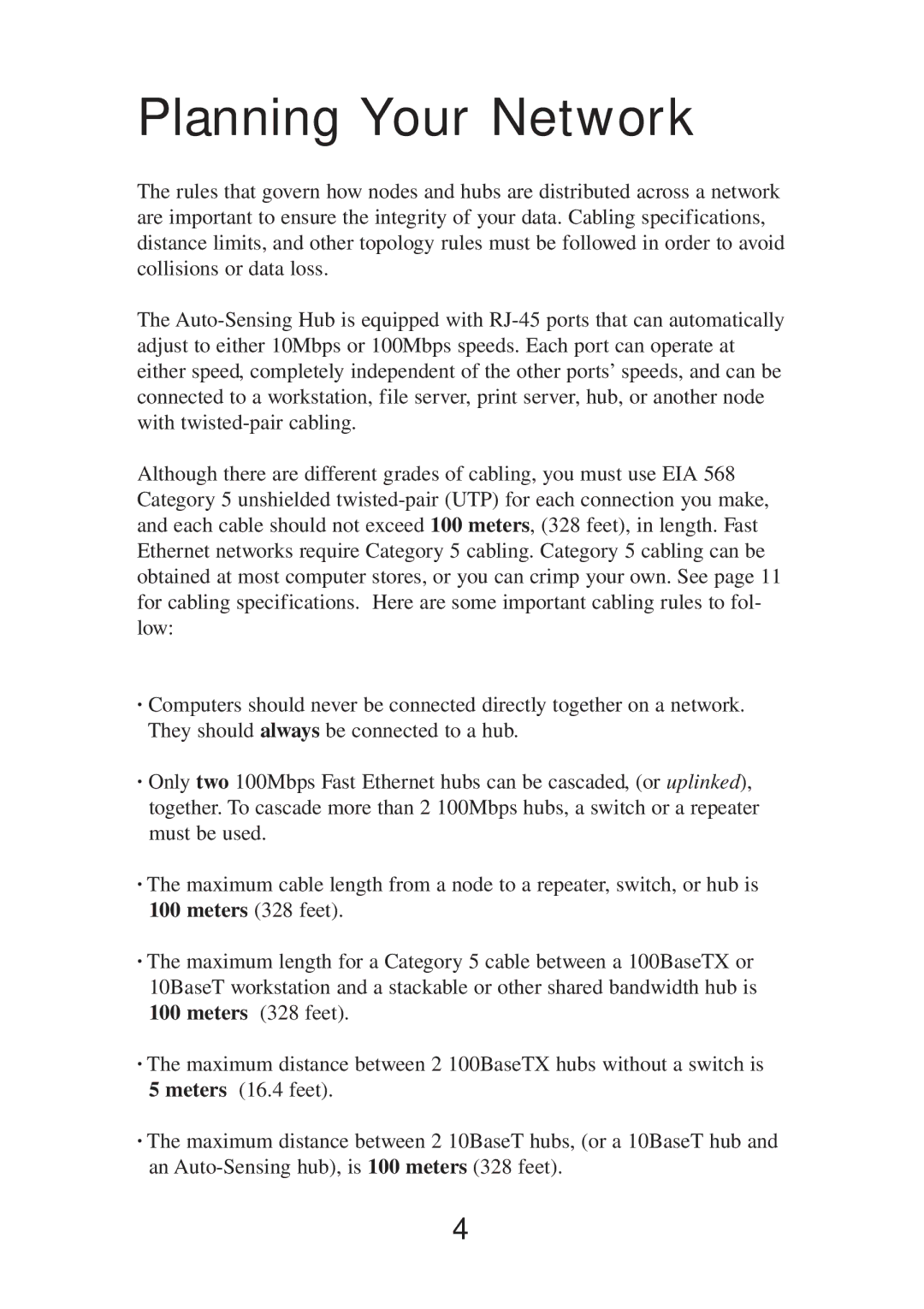Planning Your Network
The rules that govern how nodes and hubs are distributed across a network are important to ensure the integrity of your data. Cabling specifications, distance limits, and other topology rules must be followed in order to avoid collisions or data loss.
The
Although there are different grades of cabling, you must use EIA 568 Category 5 unshielded
·Computers should never be connected directly together on a network. They should always be connected to a hub.
·Only two 100Mbps Fast Ethernet hubs can be cascaded, (or uplinked), together. To cascade more than 2 100Mbps hubs, a switch or a repeater must be used.
·The maximum cable length from a node to a repeater, switch, or hub is 100 meters (328 feet).
·The maximum length for a Category 5 cable between a 100BaseTX or 10BaseT workstation and a stackable or other shared bandwidth hub is 100 meters (328 feet).
·The maximum distance between 2 100BaseTX hubs without a switch is 5 meters (16.4 feet).
·The maximum distance between 2 10BaseT hubs, (or a 10BaseT hub and an
4
